Bathroom Workbook: How Much Does a Bathroom Remodel Cost?
If you’re planning to remodel your bathroom, you want to update the look, increase resale value, add functionality, amenities and storage or a combination of all or some of these. Simple enough.
But the scope of the project depends on a variety factors — most of all budget, but also how long you’ve been in the house and how long you plan to stay there. As with most things, there are three levels of bathroom remodeling: good, better and best, says Leslie Molloy, a design consultant at Normandy Remodeling. In this new series, we’ll take you through the planning and execution process for remodeling your main bathroom.
Of course, the costs below are all relative and will depend on a variety of factors, including where you live, how old your home is and what kind of renovations have already been done. Remodeling a bathroom from the 1990s is a lot different than overhauling one built in the 1920s with mud-set floors and galvanized plumbing. “Older houses likely have had a series of previous remodels that we usually have to peel back the layers and see what’s there,” says Brad Little, president of Case Remodeling in Charlotte, North Carolina.
The first step is deciding which level of remodeling is right for you. Let’s take a look at three different cost ranges for bathroom remodels and common materials and finishes for each.
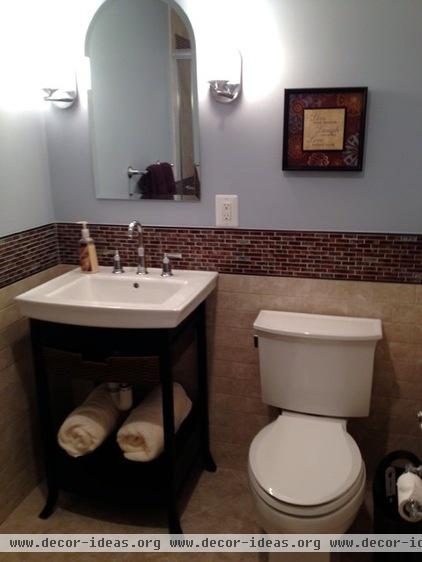
1. The Basic Bathroom Remodel
$3,000 (DIY) to $12,000
What you might get: You probably won’t be able to move any plumbing around, but you could replace fixtures and other materials with stock, off-the-shelf products like you’d find in a big-box store.
Designer Lynn Madyson says this bathroom in New York is her example of a basic remodel. “Off-the-shelf options have gotten a bit better in recent years,” she says. “You can get a little creative by doing an interesting backsplash to make things look more high-end.”
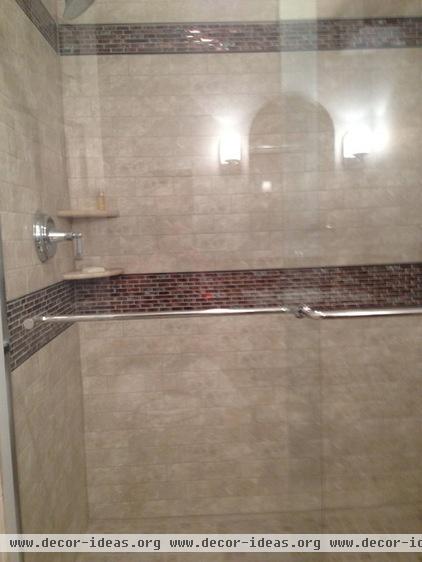
Countertops: At this level, low-end granite and cultured marble are most popular.
Tile: Don’t expect to tile an entire bathroom, but you could do a bathtub or shower area with ceramic tiles or standard white subway tiles.
Walls: Apart from a bathtub tile surround or counter backsplash, painting the walls is the most affordable choice here.
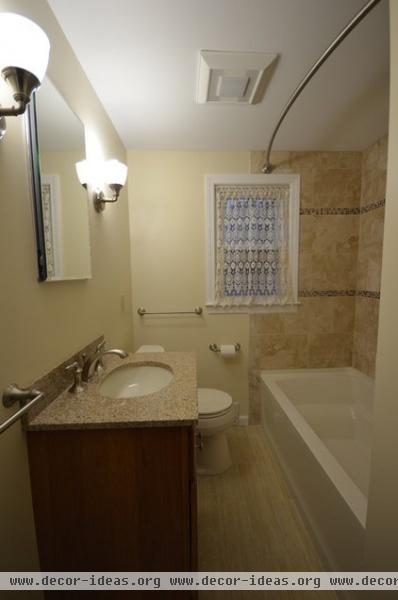
Cabinets: If your cabinets are in good condition, you might just want to refinish or paint them. Otherwise, you’re looking at off-the-shelf units.
Lighting, fixtures and finishes: All basic, off-the-shelf products. Keep in mind that because the plumbing fixtures at this level have plastic pieces on the inside, they will likely need to be replaced every five to seven years.
Tip: You can make up for the stock materials by putting more focus on the accessories. Splurge on a nice light fixture or cabinet hardware. “Accessorizing will draw the eye more so than the type of tile you have, especially if you put up a shower curtain that hides it all anyway,” says Little.
Designer Louis Cook of PerfectView Remodeling says this bathroom falls into the basic bathroom remodel range. It includes a 24-inch vanity, a low-end granite countertop and a typical fiberglass bathtub-shower unit.
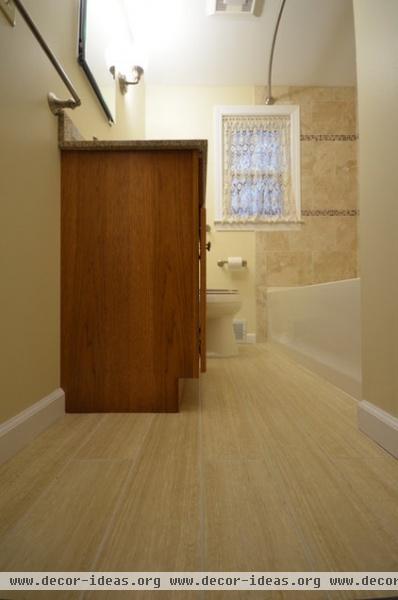
The clients splurged on large-format, 6- by 36-inch tile flooring that resembles wood. This put the project’s total cost at $12,650, Cook says. Without the material upgrade, Cook says it would have been around $10,500.
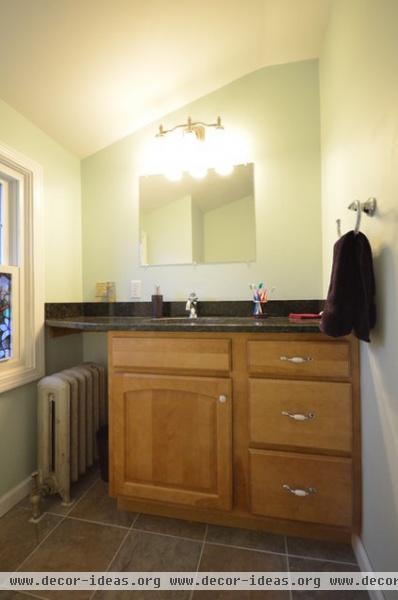
Here’s another one of Cook’s bathrooms that he puts in the basic category, between $10,000 and $11,000. There’s a vanity with a single undermount sink and a granite countertop.
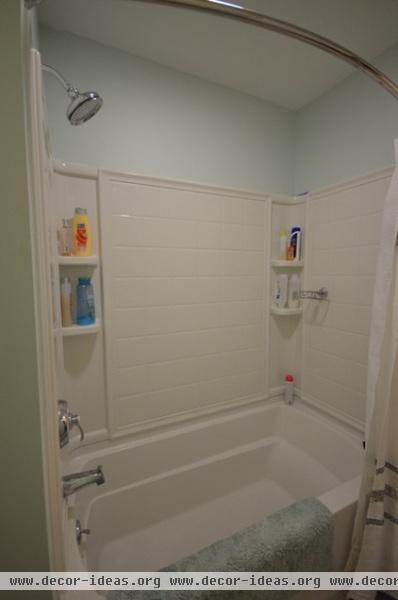
And the shower is an off-the-shelf fiberglass insert unit.
Who to hire: It’s recommended that you consult with a designer for any project, but if you’re somewhat knowledgeable, you can do it yourself or hire an experienced contractor to help. Generally, permits are not needed at this level.
A basic bathroom remodel is good for you if: Your budget is limited, obviously. “Or if you’re looking to resell your home but don’t want to spend a ton to make it look nice, this is for you,” says designer Marlene Ritland.
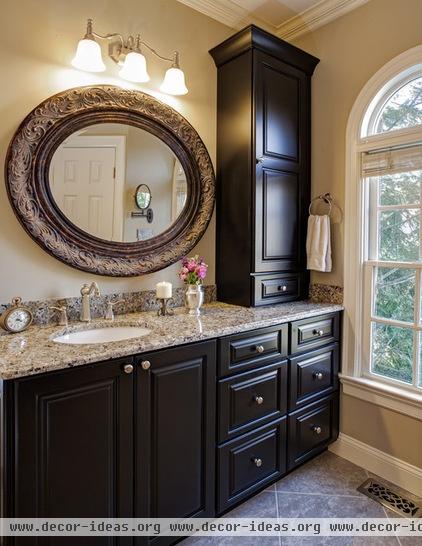
2. Mid- to Upper-Range Bathroom Remodel
$10,000 to $35,000
Why the broad range? Well, location, materials, cost of labor and project scope play into it. For example, according to the Houzz Real Cost Finder, the average bathroom remodel in New York costs just over $32,000. In Mississippi it’s just under $14,000.
What you might get: Better fixtures, like a toilet with better flushing capabilities or faucets with better flow. And new features like flooring, a vanity, a sink, lighting, window treatments, hardware, a comfort-height toilet, a 36-inch countertop, a framed mirror that matches the vanity and a recessed medicine chest — all of which are slightly better quality than from a big-box store.
Plus, you can make a few more adjustments to the layout. Maybe you’ll put in a slightly smaller bathtub to make way for a slightly larger shower. Maybe you’ll slide a sink down and move the plumbing slightly to add a tall linen cabinet.
Countertops: A higher-grade remnant or custom piece of granite, marble or quartz.
Cabinets: Semicustom pieces with higher-end finishes — glazed instead of just stained — and decorative details like cabinet legs and intricate door panels. “Maybe something made locally or in the U.S. that maximizes every inch in your bathroom for counter space,” says designer Nathan Reynolds-Poulin.
The bathroom shown here, done by Case Remodeling for $30,000 to $35,000, is an example of a midrange bathroom remodel. It features porcelain tile, a his-and-her semicustom vanity, granite countertops and brushed-nickel plumbing fixtures.
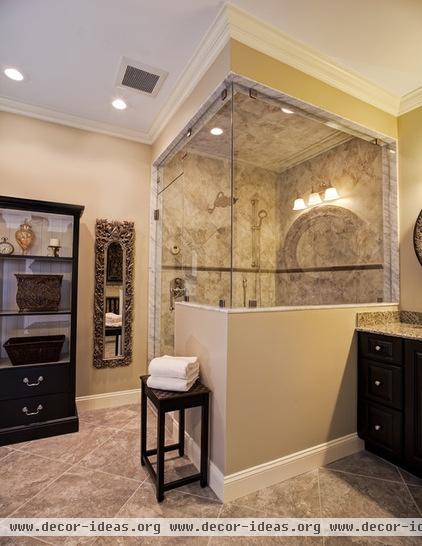
There’s also a fully enclosed steam shower with an integrated bench.
Plumbing: You can make moderate adjustments to the plumbing, like moving the faucets or shower, but the toilet will likely stay in the relative same spot. “The toilet location is the tree trunk of the drainage lines,” says Little. “If you move that to an opposite side of the room, you’ll then have to change the showerhead, drain and faucet locations. If you can keep that where it is, do it.” You might also add separate valves for temperature and flow control and showerhead pressure.
Fixtures: You can upgrade the fixtures for ones with higher-quality copper or bronze inside, which will last considerably longer than off-the-shelf units.
Tile: At this level porcelain will be your new best friend. It’s more durable than ceramic and slip resistant, and there are more color, size and design options. “Even the low-end porcelain is nearly indestructible,” says Little. Porcelain tiles are designed to mimic natural stone, and the untrained eye can’t tell the difference. “Sometimes if you look closely, you’ll see repeating patterns of the same swirls,” he says. “That’s because it’s basically a photograph of natural stone tile printed on porcelain.”
You’ll have the option of doing more interesting borders and accent tiles, and you can tile the entire room instead of just a shower or bathtub area.
Walls: You can get a bit more creative with materials and do tile walls or real beadboard for a custom look.

Here’s another one of Little’s projects that cost around $30,000. The space is clad in porcelain tile. Frameless glass encloses the shower.
Little breaks down the possible costs of a midrange project like this: “The shower faucet, materials and labor could run $2,000; frameless glass, $2,500; tilework, $4,000 to $5,000. You’re already to 10 grand just for the shower,” he says. “A jetted bathtub is $1,500 to $5,000; a toilet, $200 to $500; granite is $1,000 to $3,000. That’s why the dollar amount per square foot in a bathroom is way higher than any other part of the house, including the kitchen.”
But it’s wise to spend the amount in there, Little adds. “You wouldn’t spend $300 per square foot in a bedroom. That’s just drywall, framing and carpeting. In the bathroom there are so many more durable finishes that will last 20, 30, 40 years. So it makes sense.”
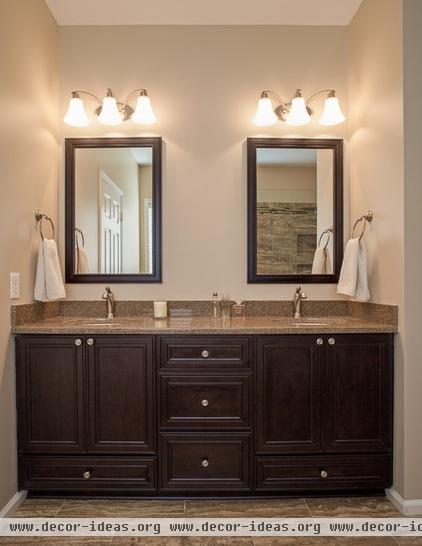
The vanity is semicustom, and the fixtures are chrome.
Who to hire: You’ll likely have a team that includes a designer, plumber, plasterer, tiler, painter and other specialists. “It’s not going to be just a Joe of all trades,” Reynolds-Poulin says. This level requires permits.
A midrange bathroom remodel is good for you if: You’re doing a remodel for yourself and not because you plan to sell and move. You’re limited in the space or footprint, but you’ll still be able to do a lot more with finishes and fixtures and cabinetry.
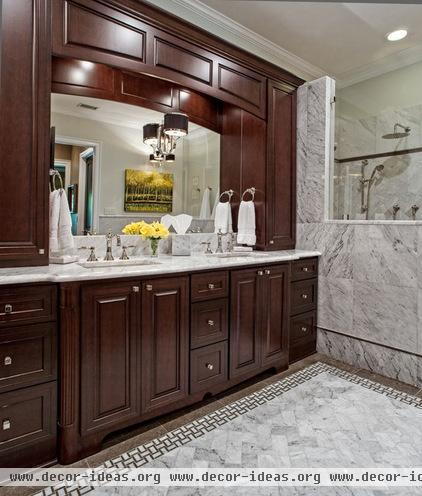
3. The Deluxe Bathroom Remodel
$30,000 to $100,000-plus
This level is also known as a full gut job. Everything will go away, and you’ll put things where you want. You might also punch into an adjacent room for more space or punch out the exterior. The toilet and shower might switch locations, the bathtub might go away and a sauna might come in; all-new high-end fixtures, materials, cabinets, lighting and finishes can be added. Detailed molding, trimwork and tilework might also be included.
Cabinetry: Solid wood construction with custom finishes and decorative accent pieces.
Tile: Natural marble, limestone or granite, all of which are more labor intensive and difficult to cut. Natural stone requires more maintenance, but every single tile has its own unique character.
Plumbing: High-end finishes and parts.
Amenities: Steam showers and radiant floor heating.
The example shown here, by Case Remodeling, falls into the deluxe category. The cost was around $75,000, and it features radiant floor heating, natural stone tiles, a custom-built vanity and polished-nickel fixtures.
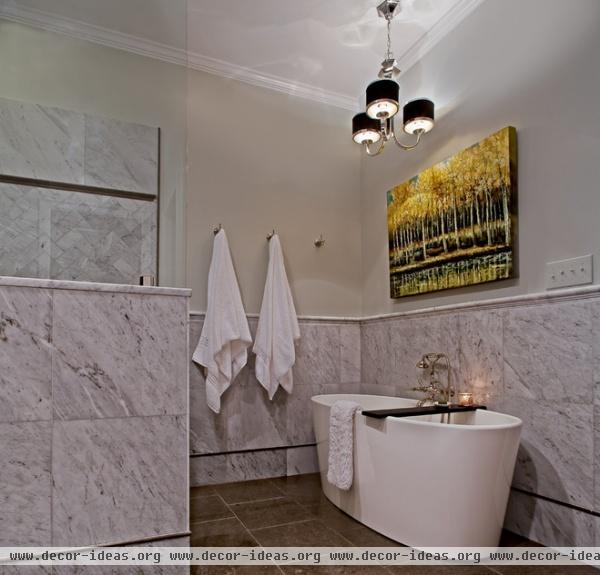
There’s also a freestanding tub with a freestanding faucet.
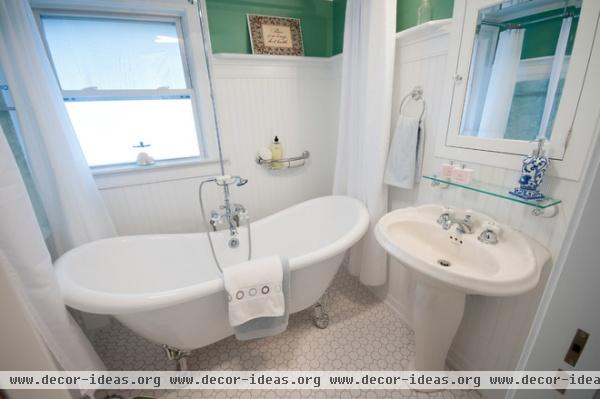
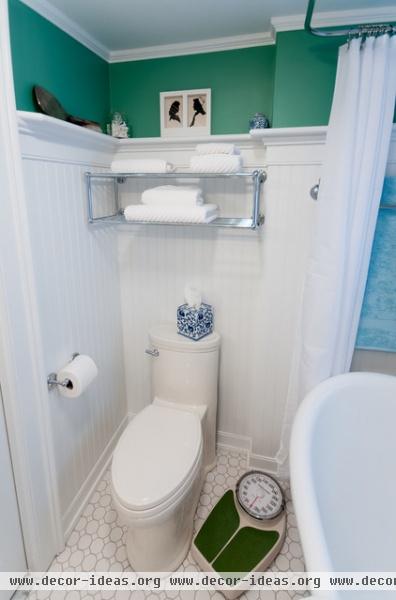
Reynolds-Poulin’s project here is another example of a deluxe project (though he considers it midrange). The cost was around $48,000. He removed a fiberglass shower; took out a washer and dryer; moved the toilet, bathtub and sink to different places; and added heated floors. Because this is the only bathroom in the house, it’s used not just by the homeowners but by guests as well, and so they were willing to put a little extra love into it.
The walls are real wood beadboard with deep molding. The windowsill is marble. The fixtures are polished chrome with porcelain handles. The toilet cost more than $1,000 alone, says the designer.
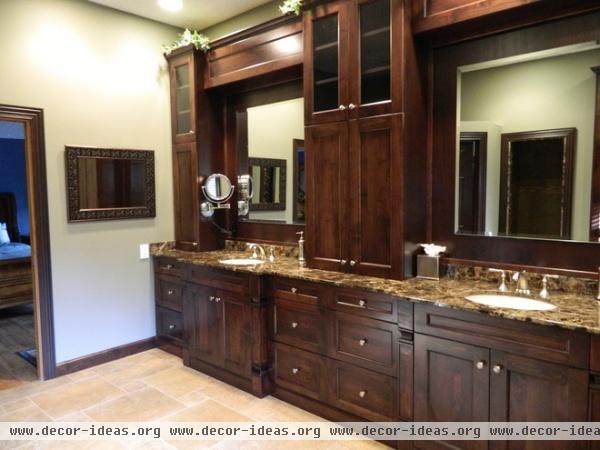
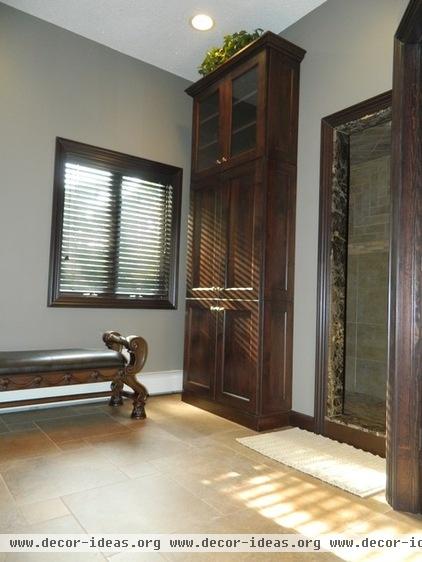
This master bathroom by Marlene Ritland ($35,000) also falls into the deluxe range. The cost included all the tilework and plumbing and about $12,000 worth of custom cabinetry.
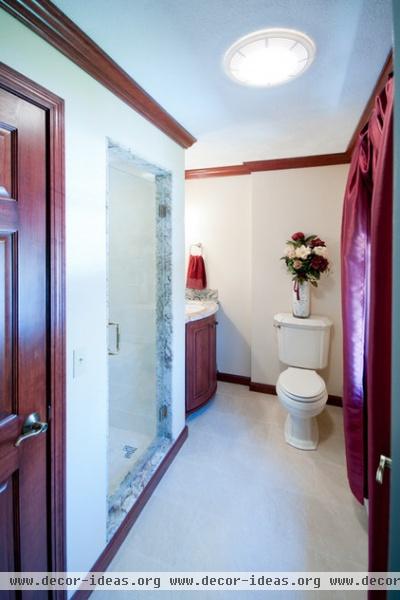
Reynolds-Poulin did this bathroom for $60,000. The 5- by 8-foot space features wallpaper, stained crown molding, porcelain tile floors, a granite countertop on custom cherry cabinets made by a local carpenter and cherry doors. There’s also a vibrant bronze finish on the plumbing fixtures, some glass accent tiles and a frameless glass door. “It’s simple in nature but has some nice colors to it,” he says.
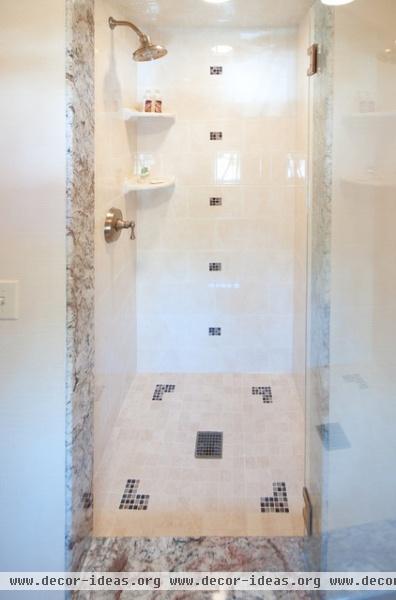
He suggests you can save money by checking out granite yards and stone yards for remnant pieces. “You might find a 36-inch piece of granite left over from someone’s kitchen project and use it for the threshold in the shower doorway,” he says.
Who to hire: Depending on the scope, you might have an architect, engineers if you’re changing the footprint, a designer and all sorts of subcontractors, like a mason, a tile layer, a carpenter, a plumber, an electrician and a general contractor. It will require permits, plumbing inspections etc.
A deluxe bathroom remodel is good for you if: You have the funds, obviously. But at this level, you’re really getting the bathroom you want. Maybe you had been saving up for a new house, but with the economy you decided to stay put. Putting some money back into your home and making it more enjoyable for you is a good investment.
Planning for a Bathroom Remodel
Budget breakdown: Once you establish your budget and start hunting for materials, consider the National Kitchen and Bath Association’s cost breakdown as a guide:
Design fees: 4 percentInstallation: 20 percentFixtures: 15 percentCabinetry and hardware: 16 percentCountertops: 7 percentLighting and ventilation: 5 percentFlooring: 9 percentDoors and windows: 4 percentWalls and ceilings: 5 percentFaucets and plumbing: 14 percentOther: 1 percentOf course, it’s up to you where to spend and where to splurge, but this breakdown is a good starting point. Plus, remember to add an additional 10 to 20 percent for unforeseen costs that might come up during construction.
When to remodel: You can do a bathroom remodel pretty much any time of year. The most common time to start is during the winter or spring.
How long it will take: Expect a month or two of planning and picking out materials and finishes. Designer Leslie Molloy says many of her clients usually spend about four to six months doing their own research and figuring out their budget and project scope before contacting a designer. Expect three to eight weeks for construction, depending on the scope.
First step: Figure out which of the three levels of remodeling your project falls into, then start looking at photos of bathrooms to figure out what style, materials and amenities you want. Molloy advises not to get too carried away with planning before reaching out to a designer for help. Professionals can quickly assess your goals and budget to steer you toward what will work for you.
More:
Find a bathroom remodeler
View the Real Cost Finder to see a range of bathroom remodel costs in your area
Get bathroom ideas from thousands of design photos on Houzz












